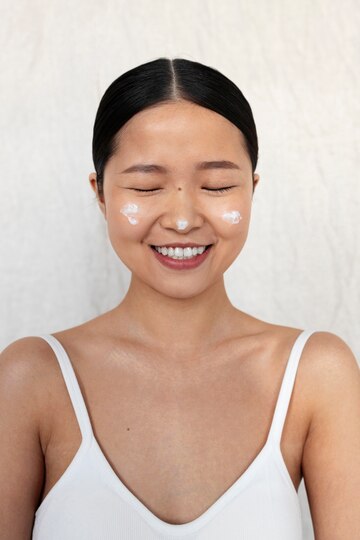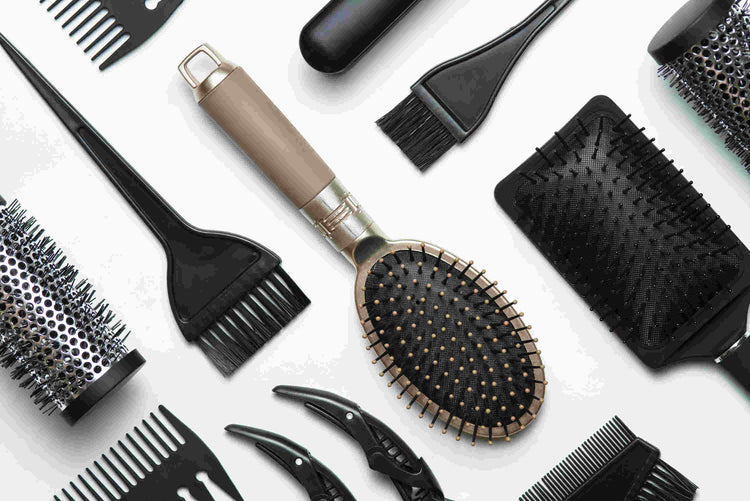Dermal Piercing: Everything You Need to Know Before Getting It


Dermal piercing, often referred to as microdermal piercing, has become a sought-after form of body modification in recent years. Diverging from traditional piercings that go through two layers of skin, dermal piercing involves the insertion of an anchor under the surface layer (epidermis) and a piece fastened on top visible above the skin.
Renowned dermatologists such as Dr. Julia Tzu and medical experts provide insights into this trend. According to them, this unique mode of self-expression is generally safe for most individuals but demands careful consideration due to potential complications like infection or rejection by one's body.
Dive deeper into understanding what it means before deciding if it suits personal preferences or not—it must be remembered—that each individual’s physique responds differently to these procedures—that decision warrants conscientious deliberation taking into account factors like risks involved in its long-term maintenance aside from inherent aesthetic appeal.

A dermal piercing, often recognized as a single-point or microdermal piercing, marks a distinctive type of body modification. It differs fundamentally from traditional piercings that have two points - entry and exit; instead, it has only one end exposed on the skin surface.
While generally considered safe among medical circles—it remains crucially important individuals familiarize themselves with risks such as infection or rejection before embracing style form—hence its vitalness lies not just upon aesthetic appeal but equally significantly towards understanding repercussions involved henceforth ensuring satisfaction post-procedure while minimizing unwanted complications during healing phase—an undeniable keystone prior initiating journey into experiencing beauty via micro-thermal artistry.
A unique feature of dermal piercing is its capability to be placed nearly anywhere on the body. It allows for creative expression beyond traditional earlobes, noses, and navel areas permitting adornment in unusual spots such as sternum or fingers.
However, anatomical suitability must remain at forethought—areas having a lot of movement like waistline or feet often lead to higher rejection rates due to constant jostling; conversely, stationary regions prove better choices as they ensure durability while decreasing risks associated with migration and rejection.
Top locations where people commonly get these piercings include cheeks (dimples), collarbones, and chest/cleavage area—even back dimples aren't off-limits. Ultimately though exact placement choice rests entirely upon personal preference —whilst always keeping safety considerations mindfully noted.
Two significant components constitute the jewelry used in dermal piercings: an anchor and a top piece. Both are usually crafted from hypoallergenic materials such as surgical stainless steel, titanium, or gold which minimizes allergy risks.
The anchor: inserted beneath the skin’s surface layer —is typically shaped like a small footed barbell for stable positioning under your skin. It features holes to permit tissue growth around it which aids secure attachment while mitigating migration chances.
Top pieces: the visible part atop the skin—are interchangeable allowing wide-ranging customization options; they vary vastly concerning shapes (rounds, stars), gem types (diamonds, opals), and colours thereby offering freedom of expression per personal style preferences or event appropriateness – simple tops match work settings whilst sparkly gems suit celebratory occasions better.
Regardless of piercing location choice—including face zones like cheeks or body parts such as collarbones—a plethora of selection lies within reach ensuring suitability with diverse tastes across individuals globally choosing this unique form of adornment.
Dermal piercing is done by following a series of steps, each crucial in ensuring the success and safety of the procedure.

Pain tolerance varies significantly among individuals, making it challenging to provide an exact definitive answer regarding the level of discomfort experienced during dermal piercing. However, many people describe the sensation as a pinch—akin to having blood drawn or receiving a shot.
The procedure involves two steps: First is creating a small pocket in the skin using needles where an anchor will then be inserted. While local anaesthesia often mitigates any severe pain from this process, slight discomfort might occur - likened by some recipients to that of being pinched.
Moreover, factors like individual pain thresholds and location choice directly impact one's experience with dermal piercing —locations such as collarbones or hip bones have minimal flesh padding; hence they hurt more than fleshy parts like cheeks.
Although fleeting—the initial sharpness usually subsides soon after insertion—it might still appear painful for those sensitive to even minor irritations. The aftermath too—for a few days after the operation—involves tenderness around the pierced area though it diminishes over time with proper care and maintenance.
Healing time for dermal piercings generally spans from one to three months, though some factors influence the specific duration. Piercing location plays a substantial role in healing times—areas with thicker skin might take longer compared to areas with thinner tissues.
Hygiene practices are crucial as well—impeccable cleaning routines expedite healing while poor habits increase infection risks thereby prolonging the recovery period. Severe complications such as migration or rejection lengthen this process further but they fall under rarer occasions if professionals undertake the procedure properly.
The body’s response varies per individual thus heal-time isn’t universally identical—it is contingent upon each person's inherent healing rate and care regimen post-procedure. It is significant that throughout the entire recovery phase, respect towards body signals helps keep potential issues at bay.
Post-procedure care of dermal piercings is crucial for speedy recovery and to avoid complications. Immediate days following the procedure necessitate keeping the area clean and free from irritation.
Hygiene sits at the core of aftercare—cleanse the piercing site daily using saline solution or a mild, non-alcoholic soap. During the initial weeks, refrain from touching it unless necessary when cleaning—and that too with thoroughly washed hands only—to guard against infection risk.
Certain activities like swimming in public pools carry potential risks due to the water’s bacteria presence hence during the healing period such instances are advisable to be avoided. Clothing tightness over pierced regions must also be carefully monitored as chaffing has a chance of irritating newly-pierced skin additionally prolonging heal-time duration.
Dietary habits influence your body's healing ability; intake rich in Vitamins A & C helps boost the immune system thereby aiding the rate at which a wound heals while smoking hampers this process—it proves beneficial considering these details throughout the recovery course.
In case signs recommending professional consultation appear—for instance, inflammation lasting more than a few days post-operation or unusual discharge from a pierced location—instantly seek medical attention because leaving matters unattended often leads to bigger health concerns.
Dermal piercing poses several complications that individuals must consider before proceeding with the procedure. Here are some common issues associated:
Given these considerations—it becomes critical for anyone considering dermal puncturing—to weigh pros against cons while keeping individual physiological adaptability into account since decisions regarding such permanent modifications ought to be adequately informed ones only.
When it comes to symptoms after receiving a dermal piercing, vigilance plays an essential role. Certain signs warrant immediate attention and potentially professional medical consultation.
Bear in mind that while any single symptom might arise due to less serious causes; multiple ones appearing simultaneously escalate worries about deeper complications at hand—an appointment with a healthcare provider ensures maximum safety under these circumstances keeping unforeseen health adversity away.
Contemplating dermal piercing necessitates understanding certain risks and responsibilities associated with it. Notably, individuals prone to keloids—raised scars that grow larger than the wound itself—are generally advised against undergoing dermal piercings due to their bodies' increased propensity for scar formation.
Furthermore, people who engage in high-contact sports or strenuous physical activity might want to reconsider as regular trauma to the pierced area increases the possibilities of irritation, complications, or even rejection by one's body—a phenomenon where one’s immune system treats implanted jewellery as a foreign object thereby pushing it out of skin surface.
Dermal piercings demand meticulous aftercare routines—individuals unwilling or unable to maintain such stringent care regimens risk infection including other complications. It becomes imperative—not just on pain toleration grounds—but also considering long-term maintenance demands before opting for these unique modes of self-expression.
Additionally, those with specific metal allergies need careful consideration regarding the choice of materials used during the procedure since reactions might lead not only towards discomfort but more serious health concerns too.
The average cost for a dermal piercing lies within the range of £40-£100. Several aspects influence these prices, including location—metropolitan areas tend to charge more than rural ones due to higher operating costs.
Equally impactful is the professional expertise level conducting this procedure—an experienced piercer might demand higher fees yet their proficiency reduces risks like infection or improper placement that could lead to costly follow-ups.
Additionally, your choice of jewellery impacts the final price tag as well; high-quality materials such as surgical steel or titanium swiftly escalate total amounts compared with cheaper alternatives.
One key piece of advice given by experts transcends all factors - avoid compromising quality over expenses since it’s an investment toward personal health and safety.
Dermal piercing is a distinctive body modification where an anchor, for adornments, is inserted into the dermis layer. This procedure boasts versatility and can be placed anywhere except in high-usage areas like palms or soles. Despite being generally safe, it carries potential complications such as infection or rejection which necessitate awareness before undergoing the process. Healing ranges from 1-3 months depending on individual healing capabilities and aftercare routines—indicating the significance of informed decisions to ensure satisfaction while reducing risks post-procedure—an essential consideration when exploring microdermal artistry.
Before getting a dermal piercing, it is essential to understand the procedure and potential risks involved. Realise that pain tolerance varies across individuals and might be slightly discomforting for some. Research thoroughly about its proper after-care practices since the success of this process heavily relies on vigilant hygiene routines.
Following a dermal piercing, avoid excessive touching or twisting the adornments as they heal—foreign particles from hands could trigger infection in fresh wounds. Swimming pools are best avoided too due to the high risk of bacteria exposure which might delay the healing process overall.
Dermal piercings typically take between one and three months to fully heal depending largely upon individual healing capabilities along with diligent follow-through on the care regimen post-procedure.
Talking about their sturdiness – while not common - issues like accidental pulls or constant irritation sometimes cause them to fall out easily hence causing the need for reinsertion by professionals again.
Applying Vaseline isn’t recommended because it tends to block air passage needed for wound breathing during its recovery phase—which remains crucial towards successful healing—it suffocates skin thereby hindering much-needed oxygen reception and otherwise promoting optimal repairment scenario.
Sleeping doesn't have any specific criteria except avoiding direct pressure onto the pierced site until sores subside completely—it minimises any inadvertent changes leading towards complications including infections resulting from continuous rubbing against pillow covers dirtied through usage over time.








Plus get the inside scoop on our latest content and updates in our monthly newsletter.